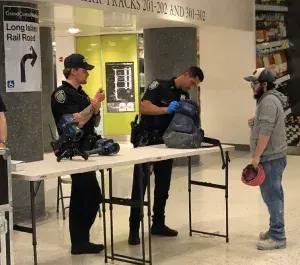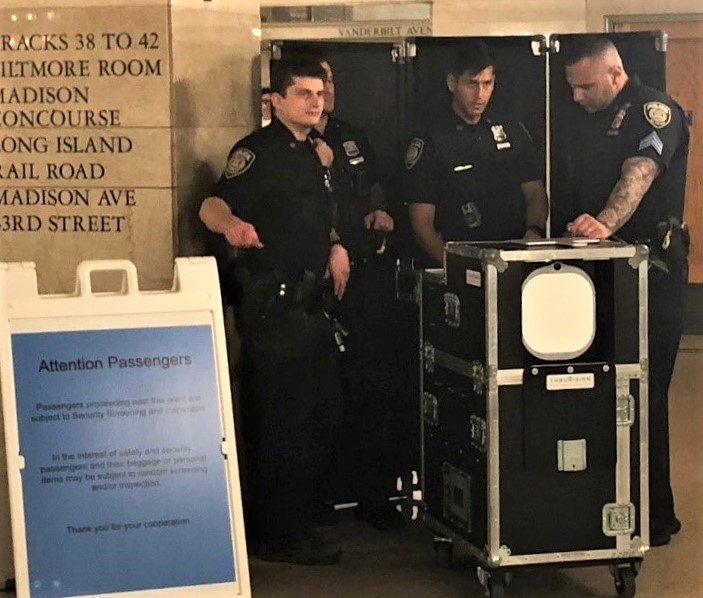
In an effort to address continued security threats, TSA partnered with the New York Metropolitan Transportation Authority (MTA) to assess two screening technology systems inside New York City’s Grand Central Terminal.
TSA’s Multimodal and Public Area Capabilities (MPAC) surface team is also collaborating with New York Police Department leadership and briefed them on the new technology.
The most recent technology assessment throughout Grand Central Terminal took place during several rush hours. The goal was to gauge the suitability of these two new methods of screening passengers and bags that may contain hazardous materials and threaten the mass transit system.
One unit, called a Pendar, resembles a hand-held video camera designed for short-range, point-and-shoot identification of visible residue levels of hazardous chemicals, explosives and narcotics and can detect through plastic bags, chemical hoods and even closed windows of trains and mass transit vehicles.

The other unit, a Thruvision (TAC) detection-at-range screening technology, is a passive device used for high volumes of passenger screening. TAC uses natural emissions from the passenger who is being screened to determine if an anomaly is present, such as a firearm or suicide vest, and can be used to screen both stationary and moving passengers to detect objects that could be potential threats.
The operator of the TAC unit assesses a visible avatar that does not contain any anatomical detail and a CCTV image to determine if a potential threat object is present.
“The idea is to provide the end-users the opportunity to view, understand and operate the units to enable them to have the best opportunity to assess whether they want to invest in these types of technologies to help protect the traveling public,” said James Bamberger, branch manager for TSA’s MPAC surface team which is focused on providing security technology solutions in multimodal and public area transportation systems. “By providing the technology to MTA and training their law enforcement officers on how to operate the equipment, it offered them real-world experience in their station.”
The Thruvision system has been assessed at many locations across the country including Amtrak’s Union Station in Washington, D.C., New York’s Penn Station, Secaucus Junction Station in the New Jersey Transit system and in the Los Angeles Metro Transit Authority system.
Field assessments also took place during the Super Bowl, Papal visit, Democratic and Republican National Conventions and other major special events such as the National Hockey League’s Winter Classic.
“We’re also working with our other partners to introduce this standoff detection-at-range technology in airport public areas and venues to assist in reducing the security risk,” Bamberger said. “Our partnership with MTA is just one of several field assessments this year.”
The field assessment with MTA also provided TSA officials feedback on the operation and performance of the equipment, which influences vendor development of more effective next-generation systems.
By Lisa Farbstein, TSA Strategic Communications and Public Affairs
